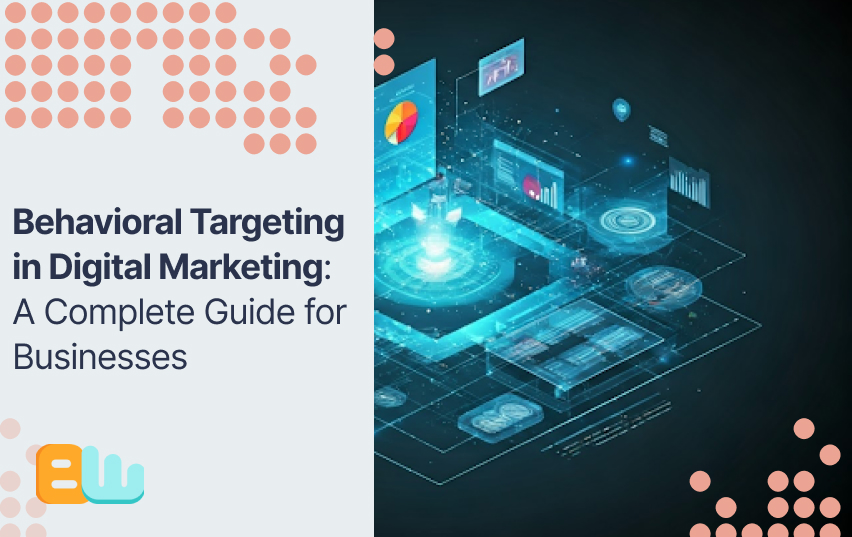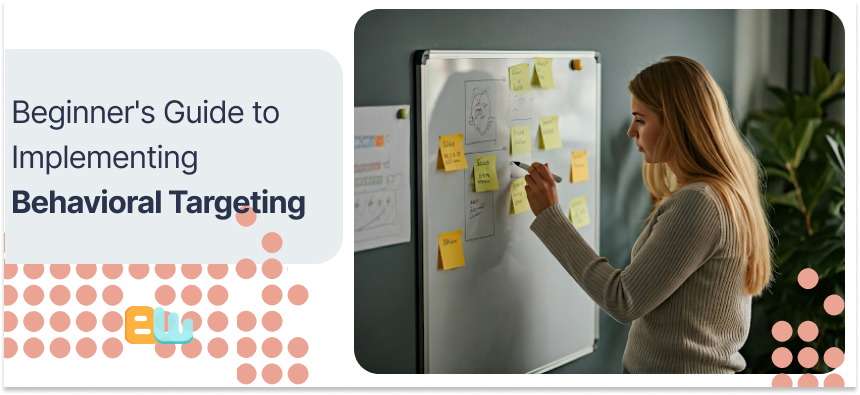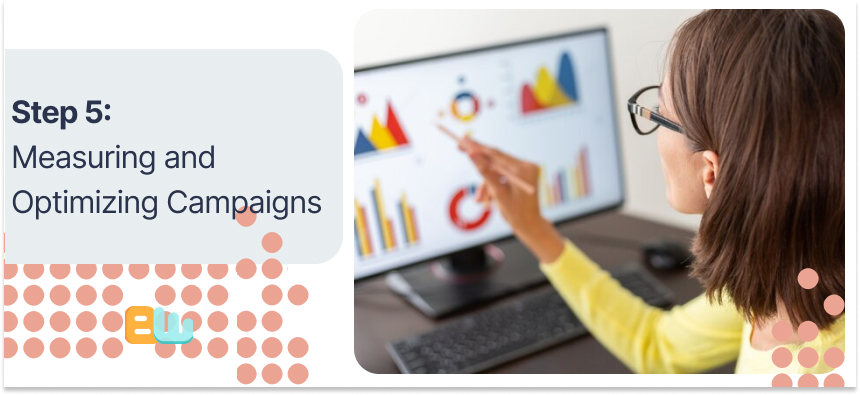
In today’s world, simple marketing messages are not as effective anymore. Smart businesses are now using better digital marketing methods like behavioral targeting. This means they look at user behavior data to make personalized marketing strategies. This blog will help you learn and use behavioral targeting. It will enable your business to connect with the right audience, sharing the right message at the right time.
Understanding Behavioral Targeting in Digital Marketing

Imagine entering a store where the salesperson knows your style and what you like. That’s what behavioral targeting can do online! It is more than just looking at basic information about people; it uses many of your online actions.
Businesses can learn what customers want by gathering and understanding data, such as which websites they visit, what they buy, and how they interact on social media. This helps them show you relevant content, which can turn visitors into loyal customers.
The Evolution of Behavioral Targeting
Early online advertising mainly used simple information about people or contextual advertising next to related content. Now, huge amounts of user behavior data and new technology have changed this game.
Intelligent algorithms now follow and study large data sets, creating a clear view of what individual consumers like. This has led to new data collection methods, including website cookies, browsing history, and social media activities. The result is a more individualized marketing approach that genuinely connects with consumers.
Behavioral Targeting vs. Traditional Advertising Methods
Traditional advertising tries to reach a large number of people at once. It often uses tools like billboards and standard TV ads. However, this approach usually does not yield great results.
Behavioral targeting is different. It focuses on precision. By examining what people do online, businesses can learn about individual preferences. This allows marketing campaigns to be very sharp and pointed. Instead of guessing if the right people will see the message, companies can be sure they share relevant content that matches what users want. This way of targeting boosts engagement leads to higher click-through rates, and ultimately helps with conversions.
The Mechanics of Behavioral Targeting

Behavioral targeting mainly involves using data. It means collecting, examining, and dividing large amounts of user data to identify patterns and predict what people will do next.
With this information, businesses can adjust their marketing messages. They can send these messages right when consumers are most open to them. This strategy helps to make their digital marketing efforts more effective.
Key Components of Behavioral Data Collection
Websites and apps are key places for collecting behavioral data. Cookies are tiny text files saved on a user’s device that track browsing and website use. This data and user data given during sign-ups or purchases help create a detailed picture of user behavior.
More advanced systems, called data management platforms (DMPs), help gather and sort this information. They serve as central storage and help marketers divide audiences based on similar actions and likes.
Techniques for Effective Data Analysis and Segmentation
Once data is collected, the real magic of behavioral targeting unfolds through data analysis. This is where powerful algorithms and machine learning come into play, identifying patterns and trends within the data that would be impossible for humans to discern.
Marketers then use these insights to divide their audience into meaningful segments based on shared characteristics. This behavioral segmentation is key to crafting highly targeted marketing campaigns that resonate deeply with each group.
Beginner’s Guide to Implementing Behavioral Targeting

The technology behind behavioral targeting may look complicated, but starting is easier than you think. With a careful, step-by-step plan, even small businesses can use it well.
The most important part is to start with clear goals. Then, you can slowly learn more about customer behavior. As you do this, keep adjusting your strategy for better results.
Essential Tools and Resources Needed
A wide range of marketing tools can help you with behavioral targeting. Google Analytics simply gives you helpful information about website visitors and their actions. As your needs increase, invest in specialized platforms to boost your results.
Personalization platforms offer many features for collecting data, sorting users, and sending tailored content. They also work well with your current CRM and email marketing systems, making everything easier.
Step 1: Setting Clear Marketing Objectives
Before using data and technology, knowing what you want to achieve with behavioral targeting is important. Are you trying to increase brand awareness, boost sales of a specific product, or decrease shopping cart abandonment?
Knowing your marketing objectives will help you plan your strategy. For example, if you want to increase customer lifetime value, you might focus on recognizing and supporting your most loyal customers. At this point, it’s very important to understand your target audience and where they are in the sales funnel.
Step 2: Gathering and Segmenting Audience Data
With your goals set, collecting important data is the next step in the behavioral targeting process. Use website tracking tools and analytics platforms. This will help you gather information on how users browse, purchase history, and engage.
Good customer segmentation relies on turning basic data into useful insights. You should group your audience based on similar behavior, interests, and demographics. This could mean making groups like “frequent buyers,” “cart abandoners,” or “new visitors.”
Step 3: Creating Personalized Content Strategies

Now that you understand your audience segments better, it’s time to have fun. You can create personalized content that connects with each group.
This can mean showing relevant ads for products they have previously looked at. You can also send emails with special offers just for them. Another idea is to change your website content based on who is visiting. The most important thing is to provide value and meet the needs of each group with strong marketing messages.
Step 4: Launching Targeted Campaigns
It’s time to turn ideas into action. Launch your well-planned targeted advertising campaigns on different platforms. This can include:
- Social media: Use the detailed targeting features on platforms like Facebook and Instagram to connect with your desired audience.
- Retargeting ads allow you to reach back to users who visited your website or specific products but did not make a purchase. These ads can appear on other sites or social media.
- Display ads: Use ad targeting options from Google AdWords and other advertising networks to put relevant ads in front of your target audience.
Step 5: Measuring and Optimizing Campaigns

Campaign optimization is a process that never stops. You should analyze how your campaigns perform regularly. Keep an eye on important numbers like click-through rates, conversion rates, and how you measure ROI.
Try using A/B testing to test different types of ads or landing pages. Keep adjusting your targeting, ad designs, and messages based on the data. This will improve your campaigns and increase your ROI.
Conclusion
Behavioral targeting in digital marketing helps businesses improve their campaigns by personalizing them based on user behavior. When businesses know what customers like and are interested in, they can create better content that connects better, resulting in higher engagement and more sales. To use behavioral targeting, businesses must have clear goals, analyze data, create personalized strategies, run targeted campaigns, and keep improving. Small businesses can also use this approach with the right tools. It is essential to consider ethics to keep customers’ trust. Use behavioral targeting to improve your marketing efforts and build strong connections with your audience. If you want to boost your digital strategy, use behavioral targeting today!
